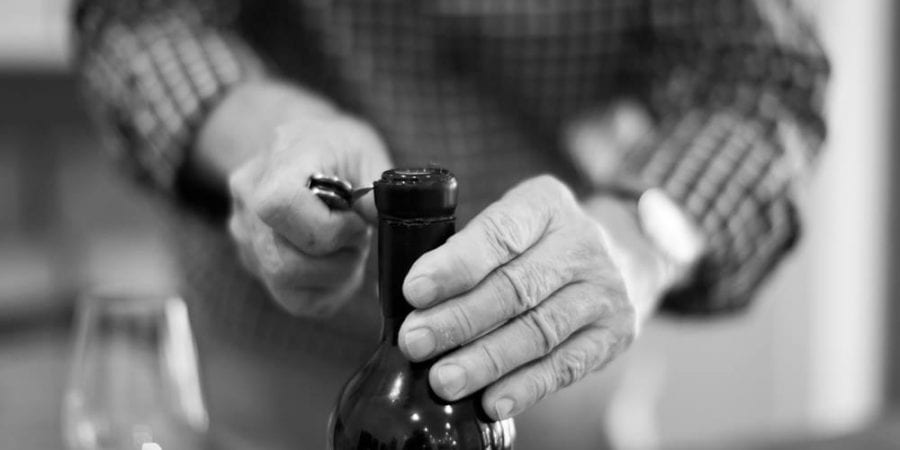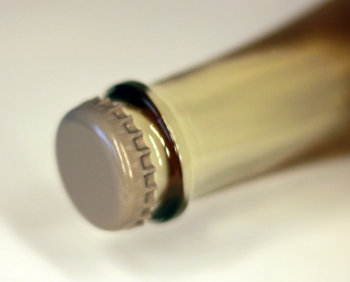I had a totally different post topic up my sleeve for this week. But then I got an email from our loyal Californian Jockey Club member (yes, we have a member in the USA!).
Among other flattering things about me*, he wrote this…
“By the way, I continue to look forward to your wonderful blog! Maybe one on corks and screw tops in the future would be nice.”
Gordon, your wish is my command!
* ok, maybe it was more about Rob, the wine and Somerled in general… (details, details)
Anyway, let’s have a look at the wonderful world of wine bottle closures!
What is a closure?
“Closure” is a fancy term for anything you put on or in the top of a wine bottle to stop the wine from falling out. Not only does it keep the good stuff in the bottle where it belongs, but it also keeps the “bad” (when it comes to wine storage for long periods of time) out.
Cork versus screwcap
The Australian wine industry has been a pioneer in so many areas of wine quality. All for the benefit of the consumer. The development and commercial acceptance of screwcap (or Stelvin seals) is a great example of this pioneering ethos.
The grandeur and ceremony of uncorking a well-matured bottle of special wine is undeniable. However, the most disappointingly unceremonious situation is to find that your wine is virtually undrinkable due to the nasty taint of contaminated cork. This phenomenon historically affected up to 1 bottle in every case (around 8%) and could be very random. It is caused by biochemical contamination with 2,4,6-Trichloroanisole (TCA or more commonly called cork taint).
 Cork comes from the bark of cork oak trees (Quercus suber). It has been used to seal wine bottles since the late 1600s, and so many of the world’s great wines have been produced successfully using this trusted method. The problem is that because it’s a natural product and subject to variability no two corks are exactly the same. The sealing quality of cork is determined by a number of factors including uniformity, density and fit in the bottle.
Cork comes from the bark of cork oak trees (Quercus suber). It has been used to seal wine bottles since the late 1600s, and so many of the world’s great wines have been produced successfully using this trusted method. The problem is that because it’s a natural product and subject to variability no two corks are exactly the same. The sealing quality of cork is determined by a number of factors including uniformity, density and fit in the bottle.
The other issue was that as the popularity of wines from places like Australia grew on the world stage, the supply of quality cork dwindled. I’m going to put it out there and say that perhaps the cork industry began to take some short cuts. Cork is also quite expensive – around $1 per bottle.
The search began…
So in Australia, the innovative wine companies experimented with alternative closures. Plastic, composite cork, glass, silicon, and high tech screw caps were all considered. The aim is the keep all the good aromas and flavours and the liquid itself inside the bottle and not let any gas (eg oxygen) from the atmosphere enter the bottle. Not as easy as you think!
Some of the materials trialed looked ok… until the wine was shipped across the equator through the ups and downs of temperature and humidity. Contraction and expansion of the closures caused leaks. Some worked fine for short periods but did not last the 10 years plus that the winemakers intended. Some materials were too expensive especially for the more commercial (read cheap) end of the market.
And the winner is…
So the closure which has come out as the preferred option and has proven itself to keep wine fresh and even extend the maturation process in some cases is …… the good ol’ screwcap! We think Yalumba was the first to conduct long term cellaring trials and they used riesling as the guinea pig, they found that the quality and consistency was enhanced when compared with high-grade corks.
The Somerled choice…
So, this is one of the main reasons Rob decided to change from cork to screwcap for the 2014 Shiraz (and presumably all future incarnations).
In Rob’s words…
“I have great confidence that the maturing process will be very similar. My own experience with screwcaps on reds goes back to 2002, and the results have been great – the wines have developed beautifully under screwcap!”
Other types of closures
 Crown Caps
Crown Caps
Reserved for sparkling wines, these have been used for years behind the scenes (as you’d know from my sparkling post a few weeks back). The traditional champagne cork would be swapped in before shipping, mostly to preserve the fanfare of opening a bottle of bubbly. But some producers, including Somerled, skip that step, preferring to re-seal bottles of sparkling with a crown seal. Rob prefers this as rarely has a person taken out an eye with a crown seal (the same can not be said for a cork, I am sure!). There is also more chance of your bubbly staying bubbly if you want to cellar it for a long time.
Glass

Glass became a viable option with the launch of Vinolok in 2003. The striking design comprises an O-ring made from an ethylene vinyl acetate copolymer resin encased in a protective aluminium sheath. It’s popular in Austria and Germany, and Henschke was the first Australian producer to adopt it.
Some have questioned the durability of the O-ring and whether there will be any chemical reaction between it and the wine, although there’s no evidence to date. The main barrier is the cost. Vinolok is relatively expensive – in Australia well over $2. They also don’t play very well with most bottling machines, meaning more cost and labor in bottling.
 Synthetic Corks
Synthetic Corks
These perfectly smooth, uniformly-colored corks can almost pass for real corks, which is basically the idea. They retain the ritual of using a corkscrew and popping a cork while keeping a more predictable, cost-effective closure in the bottle. One of the largest producers claims more consistent oxygen transfer rates than natural corks, long aging in the bottle (at least with their premium product), and more options for customization and branding than wood corks.
So, you can see that a relatively simple problem, doesn’t necessarily have a simple solution. The choice of closure is almost as important as any other decision a wine-maker makes throughout every stage of the wine-making process.
Waiter’s friend or foe…
Hands up who knows how to use a “waiters friend”? …confidently?
A waiter’s friend is one of those pocket knifey looking things people use to open wine with a cork in them. But how many of us know how to use them properly? I know I didn’t for a very long time.
So, just in case you have a bottle or two of pre-20014 Somerled Shiraz lying around, here is a great video I found showing you exactly how to open it!
What about me??
And to everyone else who has suggested topics for blog posts… rest assured, it’s coming!
Something I haven’t covered that you’d like to know more about? Let me know in the comments below and I’ll add it to my list!

 Crown Caps
Crown Caps Synthetic Corks
Synthetic Corks
Hello,
Enjoy reading your blog’s , enjoy your wine even better
Just reading on seals for bottles taking it a step further what is the best way of sealing a bottle after opening it,should you refrigerate?
I know this my make me sound like a heathen it’s a pity that fine wines don’t come in a cask so wine can be enjoyed by the glass and not by the bottle.
Regards
Alan
I am flattered to be named and surprised I had a good suggesion. Again, a first rate article and again I learned something I did not know.
I support the change to screw tops and wish to declare I hate the non-cork substitutes. They make extraction difficult because they “stick” to the opener.
You are a great writer and format the blog well. Keep up writing the interesting blog.
I was an excellent suggestion, Gordon! You’ve been a loyal supporter since the start, so more than happy to answer your questions.
I agree with your comments about the synthetic corks. I guess that’s what helps to give them such a tight seal on the bottle. Everything has its pro and cons though.
Thanks again for your support, I hope you continue to enjoy reading as much as I enjoy wrting!
Hi Alan,
Thanks for the feedback on the blog and the wine… looks like we’re getting it right on both fronts!
I’m ok with the cask comment, it’s the idea of having “leftover wine” that I have a problem with! But no judgments here.
Take at look at point 3 in this post… http://blog.somerled.com.au/archives/range/wine/more-than-just-the-glass/ where I answer this exact question!
Thanks again for your comment and for following along with the blog!
Maree